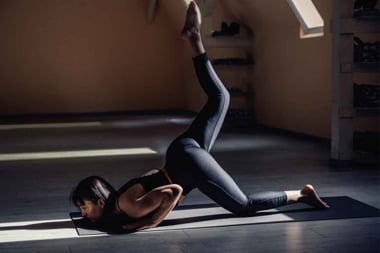
We're all aware that baking in the sun can cause cancer and premature aging of skin. Tanning beds are no better. The safe answer for your lily-whites is to use a self-tanner. Sunless tanning products are available everywhere, including natural health stores.

You’re planning a winter vacation. You’ve packed your shorts and your swimsuit, but what about the tan? What to do about those snow-white legs that could blind fellow travellers the first time you don your holiday duds?
We’re all aware that baking in the sun can cause cancer and premature aging of skin. Tanning beds are no better. The safe answer for your lily-whites is to use a self-tanner. Formulated as cremes, gels, mousses, and sprays, these sunless tanning products are available everywhere, including natural health stores.
How They Work
Self-tanners all work the same way, using a harmless, colourless sugar called dihydroxyacetone (DHA) that interacts with amino acids in dead cells on the surface of the skin to give you a temporary tan. The effect lasts for only a few days because the skin naturally sheds the dead cells that have been coloured.
Self-tanners have come a long way since they were first introduced in the 1960s. Only the brave (or foolhardy) were willing to gamble with the orange-hued, streaky glow from these first faux-glow products. New self-tanners have perfected the formulation to provide a much less risky experience. Some products contain a greater concentration of DHA than others, which determines how fast and how much the skin will change colour.
How to Choose
Self-tanners come in a wide range of applications and colours. First-time users should try using a lotion (instead of quick-drying foam), which allows more time to smooth out uneven areas. And unless your natural skin tone is very dark, start off with a product that has a lower concentration of DHA (one that’s labelled “fair” or “medium,” not “dark” or “deep”), and give yourself two or three applications, spread out over a few days.
Play it safe: The best tan is made in the shade.
Beware–Before You Bare
- A faux tan does not protect your skin from the effects of the sun’s rays, so unless your self-tanner contains a minimum of SPF 15 sunscreen, be sure to apply your own before baring yourself in the sun.
- Avoid tanning pills, which have been banned by the FDA due to dangerous side effects stemming from high levels of carotenoids.
Tan Commandments
To avoid looking like a striped carrot instead of a bronzed beach bunny, follow these tanning tips.
- Experiment with a small section of skin to see how it responds.
- Shower, and while in the shower, exfoliate with a washcloth or loofah.
- Dry your skin thoroughly.
- Apply colour only to those parts of your body that would normally get tan.
- Cover each section thoroughly before moving on to the next.
- Go over areas where self-tanner can collect (neck, knees, and elbows) with a cotton ball to dab off excess.
- Wash hands immediately to avoid telltale tan hands.
- Wait at least 20 or 30 minutes before getting dressed to avoid “tanning” your clothing.
- To maintain your glow, gently exfoliate daily, and reapply self-tanner every three or four days.




